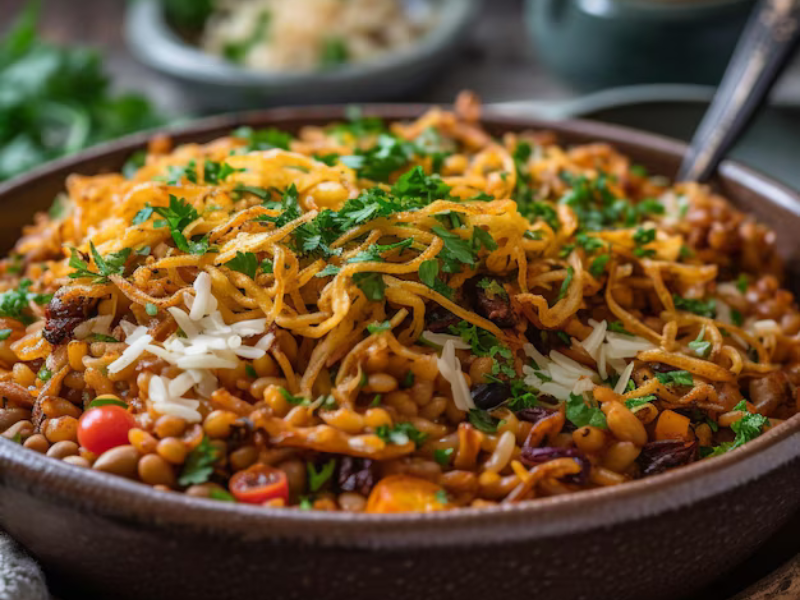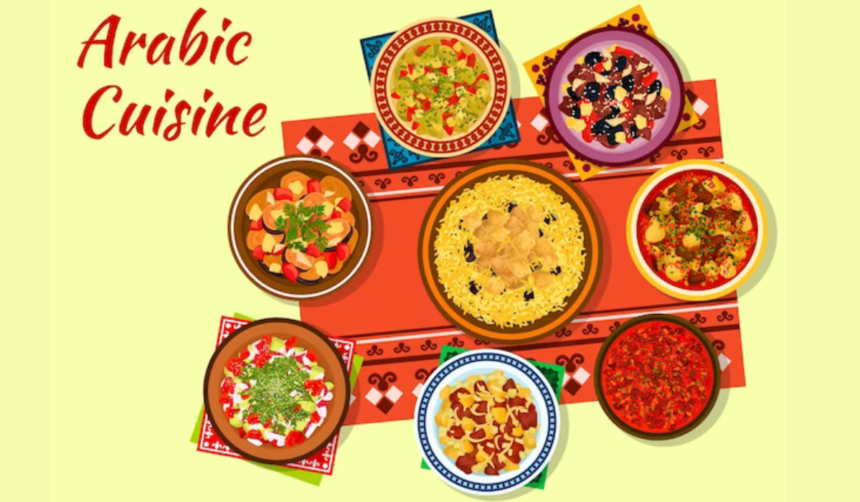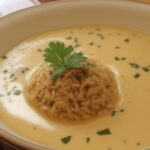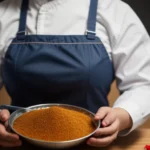Arab cuisine is as diverse and rich as the culture and history of the Arab world itself. From Morocco to Oman, each country in the Arab world has its own unique dishes and flavors that reflect the local ingredients and traditions. Exploring the rich flavors of Arab cuisine is a journey through a tantalizing tapestry of spices, herbs, meats, and grains that have been passed down through generations. In this article, we will delve into the fascinating world of Arab cuisine, from the mouth-watering mezzes of Lebanon to the aromatic tagines of Morocco.
1. Introduction to Arab Cuisine
Arab cuisine is known for its use of aromatic spices, fresh herbs, and bold flavors. Many dishes are centered around staples such as rice, lentils, chickpeas, and meat, often cooked in fragrant sauces or stews. The cuisine is also influenced by the region’s geography, with dishes showcasing the abundance of seafood along the coastlines and the use of dates and nuts in the desert regions.
2. The Influence of Geography
The Arab world stretches from the Atlantic Ocean to the Arabian Sea, encompassing a diverse range of cultures and landscapes. The cuisine of each region is influenced by its geography, with coastal regions like Lebanon and Egypt featuring an abundance of seafood in their dishes, while countries like Saudi Arabia and Yemen rely more on hearty stews and grilled meats.
3. The Five Pillars of Arab Cuisine
Arab cuisine is built on five key pillars: bread, rice, olive oil, yogurt, and dates. Bread, particularly flatbreads like pita, is a staple in Arab cuisine and is used to scoop up dips and stews. Rice is often served as a side dish or used as a base for meat and vegetable dishes. Olive oil is used for cooking and dressing salads, while yogurt adds a creamy tang to many dishes. Dates are a popular ingredient in desserts and are also enjoyed as a sweet snack.
4. The Importance of Spices
Arab cuisine is known for its bold and vibrant flavors, which are achieved through the use of spices. Some of the most common spices used in Arab cooking include cumin, coriander, cinnamon, cardamom, and turmeric. These spices are used to create complex and aromatic dishes that tantalize the taste buds and evoke the rich history of the region.
5. The Art of Mezze
Mezze is a popular style of eating in the Arab world, featuring a variety of small dishes that are shared among diners. Mezze can include a wide range of dishes, from hummus and baba ghanoush to stuffed grape leaves and falafel. Mezze is a social and communal way of dining that allows diners to sample a variety of flavors and textures in one meal.
6. Moroccan Tagines
One of the most iconic dishes in Arab cuisine is the tagine, a slow-cooked stew that takes its name from the earthenware pot in which it is cooked. Tagines can feature a variety of meats, vegetables, and fruits, all flavored with a blend of spices like cumin, paprika, and saffron. The result is a tender and flavorful dish that is both comforting and exotic.

7. Egyptian Koshari
Koshari is a popular street food in Egypt that combines rice, lentils, macaroni, and chickpeas, topped with a spicy tomato sauce and crispy fried onions. This dish is a symphony of flavors and textures, with each component blending together to create a satisfying and hearty meal that is beloved by locals and visitors alike.
8. Lebanese Shawarma
Shawarma is a popular dish in many Arab countries, but it is particularly beloved in Lebanon. Shawarma consists of thinly sliced marinated meat, usually chicken or lamb, that is roasted on a vertical spit and then shaved off and served in a pita or flatbread. Shawarma is typically served with garlic sauce, tahini, and pickles, creating a flavorful and satisfying meal that is perfect for any time of day.
9. Saudi Arabian Kabsa
Kabsa is a traditional dish in Saudi Arabia that features spiced rice cooked with meat, often chicken or lamb, and vegetables. The dish is flavored with a blend of warm spices like cinnamon, cardamom, and cloves, giving it a rich and aromatic flavor. Kabsa is a staple at special occasions and family gatherings, where it is served with salads, pickles, and sauces.
10. Emirati Machboos
Machboos is a popular dish in the United Arab Emirates that features spiced rice cooked with meat, usually chicken or lamb, and vegetables. The dish is flavored with a blend of spices like turmeric, cinnamon, and black lime, giving it a unique and fragrant flavor. Machboos is often served with salads, pickles, and yogurt, creating a balanced and satisfying meal that is perfect for sharing with friends and family.
11. Jordanian Mansaf
Mansaf is a traditional dish in Jordan that features lamb cooked in a yogurt-based sauce and served over a bed of rice. The dish is typically garnished with toasted almonds, pine nuts, and parsley, adding a crunchy texture and bright flavor to the rich and creamy sauce. Mansaf is often served at weddings and other special occasions, where it is enjoyed as a symbol of hospitality and generosity.
12. Iraqi Masgouf
Masgouf is a popular dish in Iraq that features grilled fish, usually carp, that is marinated in a blend of spices and herbs before being cooked over an open flame. The fish is typically served with rice, pickles, and flatbread, creating a flavorful and satisfying meal that is enjoyed by locals and visitors alike. Masgouf is a traditional dish that has been passed down through generations, reflecting the culture and history of the region.
13. Omani Shuwa
Shuwa is a traditional dish in Oman that features marinated meat, usually lamb or goat, that is slow-cooked in an underground pit for several hours. The meat is marinated in a blend of spices and herbs, giving it a rich and complex flavor that is enhanced by the smoky and earthy notes from the underground cooking method. Shuwa is a celebratory dish that is often served at weddings and other special occasions, where it is enjoyed with rice, salads, and flatbread.
14. Palestinian Musakhan
Musakhan is a traditional dish in Palestine that features roasted chicken cooked with sumac, onions, and pine nuts, all served on a bed of flatbread. The dish is flavored with a blend of warm spices like cinnamon, allspice, and cloves, creating a fragrant and savory flavor profile. Musakhan is a comforting and delicious dish that is often served at family gatherings and celebrations, where it is enjoyed with salads, pickles, and yogurt.
Conclusion
Arab cuisine is a treasure trove of flavors, textures, and aromas that reflect the rich history and diverse culture of the region. From the aromatic spices of Morocco to the hearty stews of Saudi Arabia, each country in the Arab world offers a unique culinary experience that is sure to delight and inspire. Exploring the rich flavors of Arab cuisine is a journey through a culinary landscape that is as diverse and vibrant as the people who call it home. So next time you sit down to enjoy a meal of hummus and falafel, take a moment to savor the flavors of the Arab world and appreciate the centuries-old traditions that have shaped this delicious cuisine.
FAQs about “Exploring the Rich Flavors of Arab Cuisine”
- What defines Arab cuisine, and what makes it unique?
Arab cuisine is characterized by its rich flavors, aromatic spices, and diverse ingredients. It encompasses a wide range of dishes from various regions across the Arab world, including Lebanon, Syria, Egypt, Morocco, and beyond. What sets it apart is its use of ingredients like olive oil, garlic, chickpeas, lamb, and fragrant spices such as cumin, coriander, and cinnamon, which create a harmonious blend of flavors unique to the region. - What are some essential ingredients in Arab cooking, and where can they be found?
Essential ingredients in Arab cuisine include staples like rice, lentils, yogurt, and flatbreads like pita and lavash. Spices such as sumac, za’atar, and baharat are also fundamental to many dishes. You can find these ingredients in specialty Middle Eastern grocery stores, some larger supermarkets, or online retailers specializing in international foods. - Are there vegetarian or vegan options within Arab cuisine?
Yes, Arab cuisine offers a variety of vegetarian and vegan dishes that are flavorful and satisfying. Dishes like falafel (chickpea fritters), mujadara (lentils and rice), tabbouleh (parsley salad), and baba ganoush (eggplant dip) are popular choices. These dishes showcase the diversity and versatility of Arab cuisine, catering to various dietary preferences and restrictions. - How can I recreate Arab dishes at home if I’m not familiar with the cuisine?
Recreating Arab dishes at home is both enjoyable and accessible, even for beginners. Start by exploring simple recipes like hummus, fattoush (bread salad), or shakshuka (eggs poached in a spiced tomato sauce). Many online resources, cookbooks, and cooking shows offer step-by-step instructions and helpful tips to guide you through the process. Experimenting with different flavors and ingredients will allow you to appreciate the richness of Arab cuisine. - Are there any cultural aspects or traditions associated with Arab cuisine?
Arab cuisine is deeply rooted in tradition and culture, often playing a central role in social gatherings and celebrations. Meals are typically enjoyed with family and friends, emphasizing hospitality and generosity. Traditional cooking methods, such as slow cooking in clay pots or grilling over open flames, are still prevalent in many households. Additionally, certain dishes hold symbolic significance during holidays and special occasions, reflecting the cultural heritage and values of the Arab people.
Advantages:
- Cultural appreciation: The title highlights an exploration of Arab cuisine, fostering cultural appreciation and understanding among readers.
- Culinary diversity: Arab cuisine is known for its rich and diverse flavors, offering a wide range of dishes and ingredients to explore.
- Gastronomic adventure: Readers can expect to embark on a culinary adventure, discovering new tastes, textures, and cooking techniques.
- Educational value: The exploration of Arab cuisine provides an opportunity for readers to learn about the history, traditions, and cultural significance of various dishes.
- Inspiration for cooking: The title may inspire readers to try cooking Arab dishes at home, expanding their culinary repertoire and experimenting with new flavors.
Disadvantages:
- Generalization: The term “Arab cuisine” encompasses a wide range of culinary traditions across multiple countries and regions, potentially oversimplifying the diversity within Arab cooking.
- Lack of specificity: The title does not specify which aspects of Arab cuisine will be explored, leaving readers uncertain about the focus or depth of the content.
- Potential cultural appropriation: Without proper context and respect for the origins of dishes, exploring Arab cuisine could risk appropriating cultural elements without understanding their significance.
- Accessibility: Some ingredients and cooking techniques in Arab cuisine may be challenging to find or replicate for readers outside of Arab-majority regions, limiting the practicality of the exploration.
- Dietary restrictions: Arab cuisine often includes ingredients like nuts, dairy, and meats, which may not be suitable for individuals with dietary restrictions or preferences, potentially alienating some readers.
















